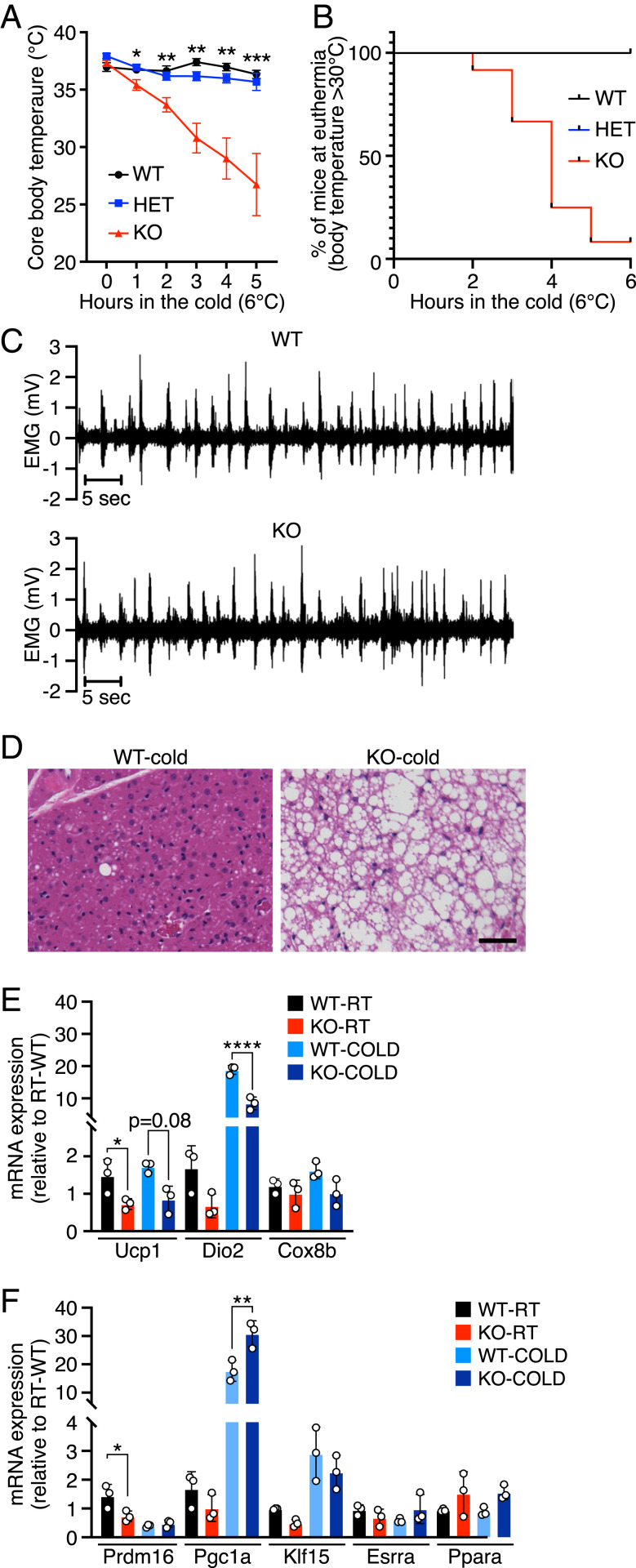Fig. 3.
Loss of function of FAM195A severely impairs thermogenesis. (A) Cold tolerance test at 6 °C of WT, HET, and FAM195A KO animals. n = 3 mice for the WT group, n = 10 mice for the HET group, and n = 12 mice for the KO group at T0. Animals were 12 wk old. *P < 0.05; **P < 0.01; ***P < 0.001. (B) Kaplan–Meier plots depicting mice maintaining euthermia (body temperature T > 30 °C) during the cold tolerance test in A for all genotypes. (C) Representative EMG measurements of muscle shivering in WT and FAM195A KO mice at 4 °C (n = 4 for each genotype). (D) H&E staining of WT and FAM195A KO BAT after cold tolerance test. (Scale bar: 50 μm.) (E and F) qRT-PCR analysis of thermogenic genes (E) and transcription factors (F) in WT and FAM195A KO BAT at room temperature and after cold tolerance test. Data are presented as mean ± SEM (A), mean ± SD (E and F), and one-way ANOVA (A, E, and F). RT, room temperature. *P < 0.05; **P < 0.01; ****P < 0.0001. WT, wild type; HET, heterozygous; KO, knock-out; T0, temperature before cold challenge; EMG, electromyography: H&E, hematoxylin and eosin.

